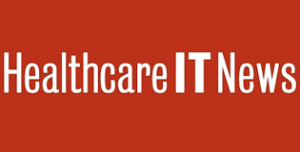By Bill Siwicki March 05, 2020 12:58 PM

Great Lakes Health Connect is one of the largest health information exchanges (HIEs) in the country, comprising a network of 129 hospitals and 4,000 primary, specialty and allied care organizations, with a registry that securely houses more than 11 million unique patient records. A 501(c)(3) nonprofit organization, the HIE offers a comprehensive, flexible and secure portfolio of HIE products and services in Michigan.
THE PROBLEM
Great Lakes Health Connect has had a well-established, closed-loop referral network in place for several years. However, the underlying technology was dated and did not adequately support provider requirements for evolving care models – including more integrated care.
The question the HIE wanted answered: How does it transition patients between physical, behavioral and social settings in a way that provides a collaborative closed loop and that assures that everyone involved in those transitions has all the information they need?
“Much of this extended-care continuum is still quite fragmented from a communications perspective,” said Doug Dietzman, CEO of Great Lakes Health Connect. “In many cases, phone and fax remain the dominant tools for managing referrals, which can cause lost information and delays. The process is opaque. We might know that a referral was sent, but do not necessarily know what happened after that.”
“Any interoperability solution must be focused on delivering relevant information immediately at the point of care, not just more data that providers will have to search through to find relevant and actionable information.”
Doug Dietzman, Great Lakes Health Connect
The HIE needed to replace its legacy system with a common community collaboration tool that:
- Could enable communication across the network to refer and route patients to the right care.
- Could scale to the statewide network to keep up with an expanding network coupled with the growing amount of health data collected.
- Was agnostic (could work with other technologies already in play throughout Michigan) and would streamline workflows through contextual awareness.
“Mostly, we wanted a single integrated platform that could accommodate referrals inside a healthcare provider’s EHR and still readily accommodate the needs of behavioral health providers, community-based social-service organizations, or anyone else who is engaged in sending or receiving referrals to have seamless access to a single central source to facilitate that process,” Dietzman explained.
PROPOSAL
Great Lakes Health Connect was drawn to point-of-care referral management IT vendor Holon Solutions. The key was the HIE’s pre-established relationships with the people involved. The HIE knew they understood the space because it had worked with them in the past, and they understood and could bring to life the HIE’s vision for a collaborative referral network, Dietzman said.
“The previous technology was a distributed model, so trying to keep it updated and managed was difficult,” he stated. “Holon brought a more centralized management model to the network itself, so we did not have to worry about going into offices and upgrading individual nodes. They also brought a more modern and intuitive user interface to the solution and worked with us to customize and configure it according to the requirements our customers were telling us they needed.”
That was a big win as the HIE had been hearing requests for some of those “wish list” items for some time, but they were ones that the old platform was unable to accommodate, he added.
“The Bridge Referrals solution, powered by Holon’s CollaborNet platform, was built so that it could integrate with an EHR,” he explained. “Our previous platform had no EHR integration, either to pull demographics or any other data out. Holon’s platform gave us the ability to do network-level reporting for a particular provider group or other organization that wanted detailed insight into their referral activity within the Great Lakes Health Connect network.”
The new platform also offered a deeper understanding of the total volume of referrals the HIE was managing, and to drill down on that activity with detailed metrics and operational details that provided greater understanding of how HIE customers were using the tool, he added.
“The new technology allows Great Lakes Health Connect to always keep the patient at the center, as they move throughout the community,” he said. “In parallel, the users of the new technology also are kept at the center, as they can take advantage of the technology, which senses the context and then intelligently presents the insights needed to succeed.”
MEETING THE CHALLENGE
Great Lakes Health Connect initially launched what it called the Bridge Referral Network in collaboration with the Greater Flint Health Coalition as part of the Genesee County State Innovation Model initiative. The timing of the rollout aligned with the HIE’s participation in the State Innovation Model initiative and made for a perfect trial for the enhanced referral technology.
“The Greater Flint Health Coalition had all the right partners assembled around the table and was trying to define a process for the qualification and intake of prospective patients, screening them for specific social determinants of health, and successfully connecting them to appropriate resources,” Dietzman said.
The HIE helped implement the Bridge in 85 healthcare-provider organizations and linked them electronically to each other and to more than 40 community-based organizations that address SDoH factors and that were participants in the Greater Flint Health Coalition Genesee County State Innovation Model initiative. The HIE wanted to start small, learn from its successes and failures, then roll out statewide.
“The Greater Flint Health Coalition also developed a short, social determinants of health screening survey that they administered to every Medicaid beneficiary to ask about their food, transportation, housing, substance use, water, employment and other needs,” Dietzman explained. “Based on those responses, providers can access the Bridge to refer the beneficiary to the appropriate community-based organizations, as well as coordinate care for medical needs.”
Through the HIE, the medical or social determinants referral request from the participating providers flows to the Great Lakes Health Connect’s Genesee Community Health Access Program. The referral is assigned to a community health worker, who then engages with the patient to understand their needs, explores community resources through CollaborNet, and then schedules appointments or arranges services.
All referral information is shared among stakeholders through CollaborNet. Providers typically view and can access this information through an unobtrusive ribbon next to their EHR. The data is automatically surfaced and does not require the provider to perform another login or search for relevant information.
“After the implementation across the Flint region, we began offering online and in-person training and implementation assistance on CollaborNet,” he said. “Implementation consultants listened to the networked members to understand their information needs during referrals to ensure that they were ready and able to start coordinating care and services on day one. CollaborNet went live statewide on our network in June 2019.”
RESULTS
Related to the Greater Flint Health Coalition Genesee County State Innovation Model initiative, since November 2017, ED visits among the attributed Medicaid population in the Flint area have decreased by 15%, while thousands of beneficiaries have been helped to receive access to appropriate care and community-based services faster and more efficiently, Dietzman reported.
This is possible because of the real-time collaboration and accelerated referrals through the Bridge using the CollaborNet platform, as well as the SDoH screening tool and by means of the extensive coordination of resources, he added.
“As a whole, we surpassed access to more than one million closed-loop referrals statewide from fall 2017 to early 2019 using the Bridge application, with a total of more than 3.5 million attachments shared,” he said. “This statewide deployment spans across more than 11,229 users at 824 different organizations, including three of Michigan’s largest health systems.”
That averages to roughly 1,200 referral transactions each day. That is possible because the Bridge is cloud-based, enabling rapid implementation, he explained. Time to go-live was shortened because the platform does not require involving the EHR or any other vendor, which also enables quicker customizations when providers request it, he added.
“On average, through the Bridge, specialists accept appointments in two days and schedule a patient visit in less than a week,” he said. “Thanks to the streamlined process, the average referral appointment is accepted, scheduled and completed in less than three weeks. One of our members, Hackley Community Care Center, a multi-specialty group practice in Muskegon, estimates they are saving at least five to seven minutes per referral thanks to CollaborNet automatically surfacing appointment scheduling and confirmation data, as well as populating required documentation information.”
Further enhancing efficiency, care coordinators can clearly see every new message or activity from a referral organization because it moves to the top of the screen, eliminating searching, he added.
ADVICE FOR OTHERS
“The first question to ask is, ‘What problem are you trying to solve?’” Dietzman advised. “That involves some pretty deep discovery of who the stakeholders are, and an understanding of the barriers they may face in getting connected. Use the broadest possible definition of stakeholders. Just because a technology meets a specific organizational need doesn’t necessarily mean that it will address the needs of the community at large.”
Then seek out a technology that solves for that specific problem, he offered. This can be easier said than done: There are a lot of so-called vendors out there that may help check a box on a regulatory requirement, he said, but are they really addressing the root issues?
“Second, ensure that the technology is aligned with the users’ workflow,” he suggested. “For projects of this type of scope we needed to satisfy a wide range of users from across the state. These included physicians, referral coordinators from primary-care practices, hospital-owned clinics, specialists, community-based organizations, and more.”
A technology that can agnostically work with these technologies to complement workflows is key, he said. Providers’ main technology frustration is not just with EHRs alone, but is rather the extra steps required to access the relevant information that comes from numerous other locations such as data-analytics applications, payer portals and HIEs.
“Any interoperability solution must be focused on delivering relevant information immediately at the point of care, not just more data that providers will have to search through to find relevant and actionable information,” he said.
Finally, a referral platform must highly streamline communication, Dietzman said.
“In a value-based care era, community-based organizations must be highly involved in care coordination strategy and process design and then integrated with any referral or care coordination solution that healthcare providers are considering,” he advised. “It has been well documented that SDoH have far more influence over patients’ outcomes than clinical care alone, so tools that help providers efficiently connect with organizations that can help their patients overcome SDoH obstacles are essential.”
Closing the loop is crucial, he added. Provider organizations need to be able to easily confirm that a referral was accepted and their patient followed through with the appointment, and then learn results of the visit, he concluded.
Twitter: @SiwickiHealthIT
Email the writer: bill.siwicki@himssmedia.com
Healthcare IT News is a HIMSS Media publication.



